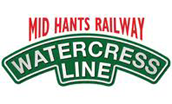Airport Categorisation
There are two ways of categorising airports. One is to define what size of aircraft the airport has been designed to handle - from something small like an ATR-72, all the way up to the Airbus A380 at the other end of the scale. As is normal in aviation, both ICAO and the FAA have their own definitions - the Aerodrome Reference Code (ICAO) and the Airplane Design Group (FAA). They both amount to the same thing as will be shown later. Related to this is the Rescue Fire Fighting category (ICAO) and the Airfield Rescue Fire Fighting category (FAA).
The other way of categorising an airport is to determine how easy or difficult the airport is to fly into and out of. An example of an easy airport would be somewhere like Manston ( Kent International) in the U.K. This airport is quiet, is surrounded by flat land, has a reasonably long runway with good intrument approaches to both ends. An example of a difficult airport would be Innsbruck. The main issue with Innsbruck is its location in the very narrow Inn Valley. Quite challenging in good weather and with a serviceable aircraft, but when things start to go awry, the workload and difficulty ramp up considerably. Innsbruck can also be subject to turbulence (Foehn wind effect), occasional poor weather (fog and snow) and it has a short runway. There is only an instrument approach to one end and, if circling is required, there are obstacles in the city itself to be aware of. All in all a lot to think about.
Airport Categorisation I (What is the largest aircraft an airport can handle?)
What should be a simple question to resolve is in reality fairly complex given two governing bodies (ICAO and FAA) and a multitude of different criteria laid down for aircraft operations. The most useful measures are the Rescue Fire Fire-fighting category (RFF or ARFF) and the Aerodrome Code. Both these measures are derived from various aircraft dimensions and approach performance.
First some definitions:
| RFF | ICAO Rescue Fire-Fighting Category: Determined by fuselage length and fuselage width. It is typical that operations to both destination and alternate airfields are still permitted when RFF is temporarily up to two states below that required by aircraft certification. ie 787-800 normally specifies RFF 9, however operations will still be permitted to airfields at RFF 7. Requirements for en-route alternates and ETOPs alternates are generally even less restrictive. |
|---|---|
| ARFF | FAA Airfield Rescue Fire-Fighting Category: as for RFF but determined by fuselage length only. |
| Approach Category | FAA Standard, also adopted by ICAO. Letter A-D determined by Aircraft Final Approach Speed |
| Aerodrome Reference Code | Reference Code made up of an ICAO code number followed by an ICAO code letter (see below). |
| ICAO Code Number | Number between 1 and 4 determined by runway field length. Of little practical use for Commercial Jet operations as all runways ≥ 1800m are category 4. |
| ICAO Code Letter | Letter (A-F) determined by maximum allowable Wing Span and Main Gear Outer Track. |
| FAA Airplane Design Group | Number between I and VI dependent upon aircraft wing span. Equivalent to ICAO code letter. |
The table below summarises all this information on per aircraft basis.
| Aircraft_Type | Wing Span /m | Main Gear Outer Track /m | Fuselage Length /m | Fuselage Width /m | Approach Category | Aerodrome Ref. Code | RFF Category | ARFF Category |
|---|---|---|---|---|---|---|---|---|
| A310 | 43.92 | 9.6* | 46.7 | 5.64 | C | 4D | 7 | C |
| A318 | 34.1 | 8.95 | 31.44 | 3.96 | C | 4C | 6 | B |
| A319 | 34.1 | 8.95 | 33.84 | 3.96 | C | 4C | 6 | B |
| A320 | 34.1 | 8.95 | 37.57 | 3.96 | C | 4C | 6 | B |
| A321-200 | 34.1 | 8.95 | 44.51 | 3.96 | C | 4C | 7 | C |
| A330-200 | 60.3 | 10.69 | 59 | 5.64 | D | 4E | 7 | C |
| A330-300 | 60.3 | 10.69 | 63.69 | 5.64 | D | 4E | 8 | D |
| A340-200/300 | 63.45 | 10.69 | 60.3/63.7 | 5.64 | D | 4E | 8 | E |
| A340-500/600 | 63.45 | 10.69 | 67.8/75.3 | 5.64 | D | 4E | 9 | E |
| A380 | 79.75 | 14.34 | 72.75 | 7.14 | D | 4F | 10 | E |
| B737-400 | 28.9 | 5.25* | 36.45 | 3.76 | C | 4C | 6 | B |
| B737-900 | 34.31 | 5.76* | 42.11 | 3.76 | C | 4C | 7 | C |
| B757-200 | 38.04 | 7.3* | 47.34 | 3.7 | C | 4D | 7 | C |
| B757-300 | 38.04 | 7.3* | 54.47 | 3.7 | D | 4D | 8 | D |
| B767-300 | 47.6 | 10.90 | 54.96 | 4.72 | D | 4D | 8 | D |
| B767-400 | 51.9 | 10.90 | 61.37 | 4.72 | D | 4D | 9 | E |
| B777-200/300 | 60.90/64.80 | 13.00 | 63.73/73.85 | 6.19 | D | 4E | 9 | E |
| B747-400 | 64.44 | 12.70 | 70.65 | 6.49 | D | 4E | 9 | E |
| B787-800/900 | 60.12/63.40 | 11.86 | 56.72/62.81 | 5.91 | D | 4E | 8/9 | D/E |
* Value is for Main Gear Track, not outer track
So, if one is reading about a new airport being built in China (where else?), and it states that it is being built to cater for code 4D aircraft, we now know the aircraft up to the size of a Boeing 767 or Airbus A310 can be accepted.
Airport Categorisation II (How easy is the airport to use?)
For each airfield an operator uses, either as a destination or nominated as a suitable alternate, there is a regulatory requirement to carry out a risk assessment. The consequence of this is to categorise the airfield as A, B or C.
Category A
A Category A airfield satisfies all of the following requirements:
- An approved instrument approach procedure.
- At least one runway with no performance limited procedure for take-off and/or landing
- Published circling minima not higher than 1000ft
- Night operations capability
Category B
A Category B airfield is an airfield which does not satisfy all of the Category A airfield requirements, or which requires extra considerations such as:
- Non Standard Approach aids and / or approach patterns, or
- Unusual local weather conditions or
- Unusual characteristics or performance limitations, or
- Any other relevant considerations including obstructions, physical layout, lighting etc.
Category C
A Category C airfield requires additional considerations to a Category B aerodrome and is considered to pose certain problems for the approach and / or landing and / or take-off.
Airfield categorisation is authorised by the Chief pilot, or in his absence the fleet manager.
The list of Category C airfields in Europe is as follows:
| BGBW | Narsarsuaq, Greenland | LGSK | Skiathos, Greece | |
| BIAR | Akureyri, Iceland | LOWI | Innsbruck, Austria | |
| EGLC | London City, United Kingdom | LOWK | Klagenfurt, Austria | |
| ENTC | Tromso, Norway | LOWS | Salzburg, Austria | |
| LFKC | Calvi, France | LPMA | Funchal, Madeira | |
| LFKJ | Ajaccio, France | LSGS | Sion, Switzerland | |
| LFLB | Chambery, France | LSGZ | Samedan, Switzerland | |
| LGMK | Mikonos, Greece | LXGB | Gibraltar | |
| LGSR | Santorini, Greece | LYTV | Tivat, Montenegro | |
| LGSM | Samos, Greece |
.












